"It is no good to try to stop knowledge from going forward. Ignorance is never better than knowledge." -Enrico Fermi
As you probably know, the Large Hadron Collider -- site of discovery of the last fundamental particle in the Standard Model, the Higgs Boson -- is the most energetic particle accelerator in the history of humankind. When the upgrades it's currently undergoing are complete, it will reach collision energies of 14 TeV.
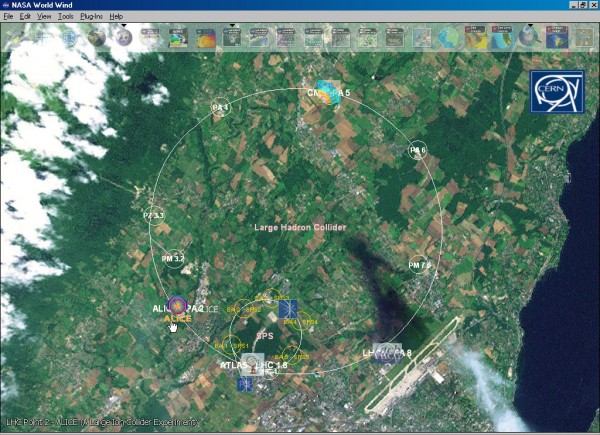 Image credit: CERN / LHC, add-on created by http://www.panglosstech.com/.
Image credit: CERN / LHC, add-on created by http://www.panglosstech.com/.
The way this happens is that protons are circulated in a giant ring, underground, that's 26 kilometers in circumference, or with a radius of about 4.3 km. A chamber inside the ring is completely evacuated, and high-energy protons are injected in either direction.
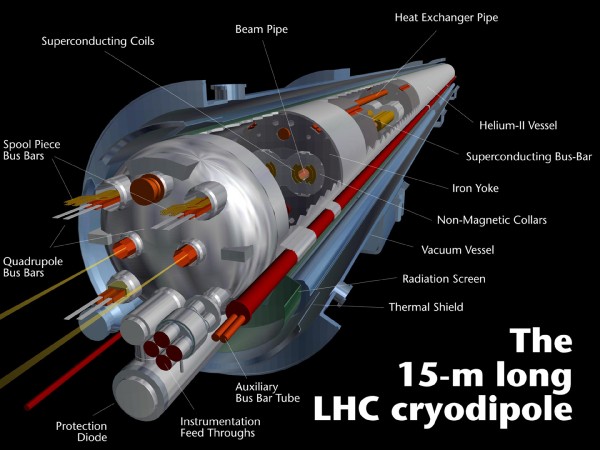 Image credit: CERN, via http://lhc-machine-outreach.web.cern.ch/.
Image credit: CERN, via http://lhc-machine-outreach.web.cern.ch/.
Inside, the most powerful, mass-produced electromagnets are cooled down to just a couple of degrees above absolute zero using liquid helium, so that they superconduct, in order to do two things:
- Accelerate the protons when they pass by, giving them a "kick" with an electric field to make them move faster along the direction-of-travel, and
- Bend the protons into a circular path, adjusting the electromagnet at every turn to provide just the right magnetic field to prevent the protons from crashing into either the inside or outside of the circular track.
The old record, for those of you keeping score, was held by Fermilab in the United States, which was only about 6.3 km in circumference, or 1 km in radius. Fermilab also used slightly older electromagnet technology (as its heyday was in the 1990s), and so achieved a maximum energy of only 1.96 TeV, colliding proton and anti-proton beams each at an energy of 0.98 TeV.
You might wonder why these circular accelerators use protons (and possibly antiprotons) instead of electrons (and possibly positrons) for their collisions. After all, unlike protons -- which are composite particles made up of quarks and gluons -- electrons are single particles, and not only produce cleaner signals which are easier to detect, but also can provide all of their kinetic energy for new particle creation, as opposed to protons which typically have most of their kinetic energy go into the non-colliding particle constituents?
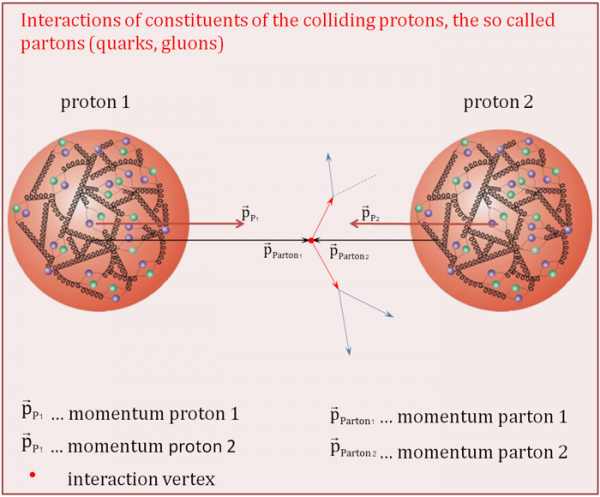 Image credit: CERN, via http://kjende.web.cern.ch/kjende/en/wpath_lhcphysics1.htm.
Image credit: CERN, via http://kjende.web.cern.ch/kjende/en/wpath_lhcphysics1.htm.
It's a good question! The problem is that charged particles moving in a magnetic field emit radiation. Typically, the speeds of these particles are so small compared to the particle's mass that this radiation -- known as synchrotron radiation -- is negligible. But an electron is 1836 times lighter than a proton, and has the same charge, and synchrotron radiation is dependent on a particles charge-to-mass ratio to the fourth power. Know what (1836)4 is?
It's freakin' huge! It's about 1013, or 10,000,000,000,000. And that's enough to severely limit what you can do with an electron in a circle, which is why the energy record for circular accelerators goes to protons and anti-protons.
Quite simply, more energy means more potential for new discoveries. If a top quark has a mass of 175 GeV (in natural units), then you've got to have at least 175 GeV available to create new particles. In theory, the LHC could create particles up to about 14 TeV in energy; in practice, it will create detectable particles up to about 600-1,000 GeV (or 0.6-1.0 TeV) in energy. If there's nothing there, that's particularly bothersome.
But what's really bothersome is that there are no ambitious plans to go to higher energies in the near-term future. Money, funding, and political constraints are the prime reasons for this, and so the next plan is for an ILC, or an international linear collider. Linear colliders are where the electron/positron setup shines, because there's no synchrotron radiation to worry about if you don't need to bend your particles into a ring. And they do allow high-precision studies up to the energies they do reach; so long as they reach ~180 GeV, they'll be able to study every known particle in detail.
But, like many of you, I dream of something new.
I dream of pushing the energy frontier.
And when I dream, I dream big.
So imagine it with me: the most powerful particle accelerator you can think up.
Okay, wait, back up a bit. What are we imagining here? What does it look like? And why?
If you want to reach the maximum energy possible, you accelerate protons in a circle. And if you engineer it perfectly, there are only two factors that determine how energetic your beam is going to be: the strength of your circularly-bending magnetic field (determined by the dipole magnet strength), which topped out at about 4.5 Tesla at Fermilab, and which will peak at about 8.3 Tesla at the Large Hadron Collider, and the radius of your circle.
That's it.
So electromagnet technology continues to improve. In 2010, we made it all the way to 36 Tesla in an electromagnet, and a tweaking of the technique got it all the way up to a sustained 45 Tesla. These field strengths aren't quite achievable for large-scale implementation yet, but could someday be.
But you know what you can control? Size. The bigger you build your accelerator, the faster your protons go. And like I said, when I dream, I dream big.
The ultimate dream machine of the particle physics community is known as the Fermitron, an accelerator that either goes around the circumference of the Earth or exists in a stable orbit around it. This would obviously require a huge amount of engineering, sustained investment, and international cooperation. But the radius of the Earth is, on average, 6,371 km, or about 1,500 times the radius of the Large Hadron Collider.
Which means, even with today's current magnet technology (the same magnets being used at the LHC), we could reach energies of about 20.7 PeV, or 20,700 TeV! And if we improve on existing electromagnet technology, that number only goes higher.
Worried about the political hurdles? Worried about our seismically-active planet? Think the space-based option is too risky? No problem, just find a seismically quiet rock nearby, and build a circular ring on that. Know of any candidates?
 Image credit: Raditha Dissanayake of http://photos.raditha.com/.
Image credit: Raditha Dissanayake of http://photos.raditha.com/.
With a radius of 1738 km around its equator, the Moon is a great place to build a particle accelerator! We're still talking many PeVs (about 6) of energy using today's magnet technologies, or nearly a factor of 1,000 more into the energy frontier. The formula for any proton-proton (or proton-antiproton) accelerator is simple: multiply your radius in km by your magnetic field in Tesla, then multiply the whole thing by 0.4, and you've got your accelerator's maximum energy in TeV. Think about your own dream machine; imagine building one a light-year in radius, we'd be able to test inflation and grand unified theories directly!
You can tell me all the reasons this won't happen, can't happen, or shouldn't happen, but at the end of the day, there's only one reason it hasn't happened already: money. We have the technology to do it right now, among many other things. The only thing stopping us is ourselves. If we don't build more powerful accelerators, all we can do to probe the energy frontier is hope for cosmic rays to hit us.
So dream big. The Universe is ours to discover; we just have to make it happen.
And that's the ultimate dream machine for high-energy physicists everywhere.

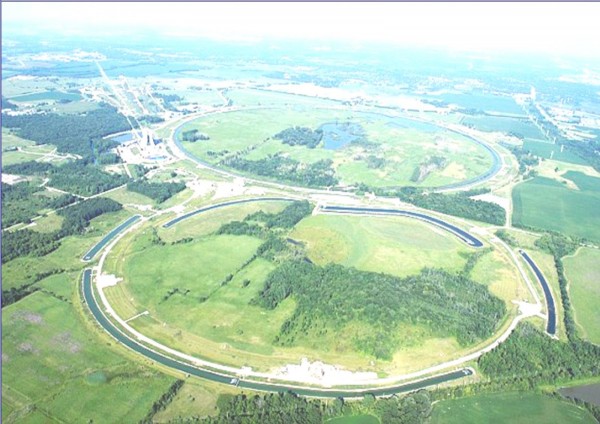

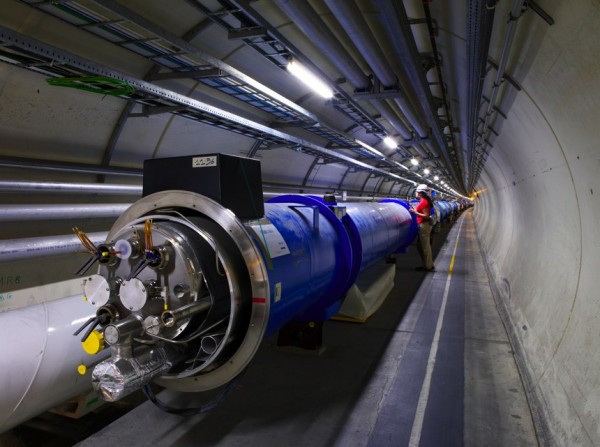
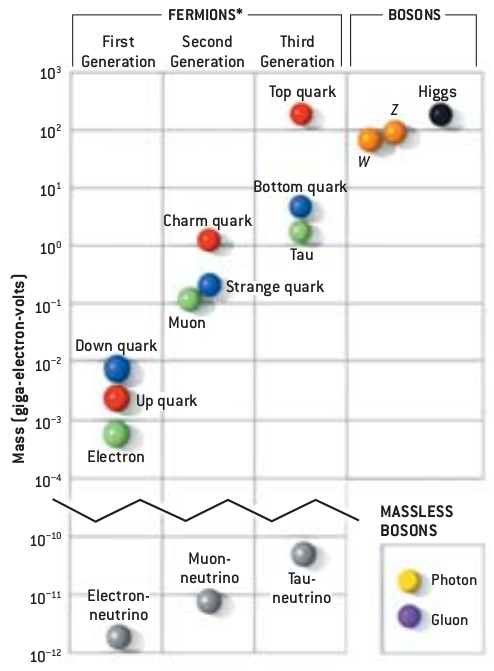
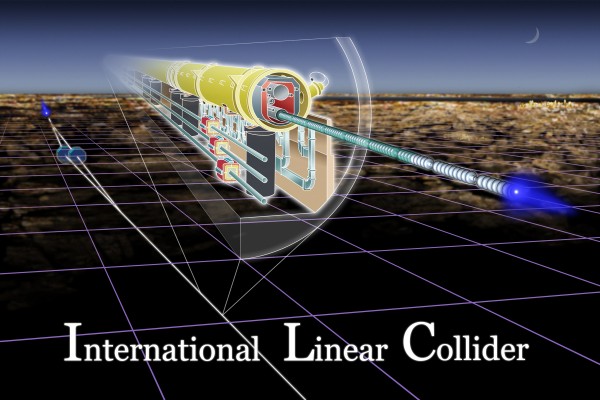
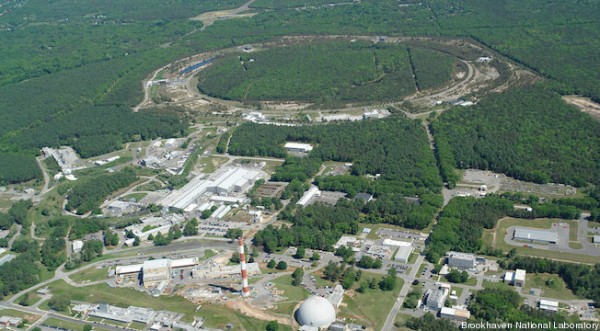
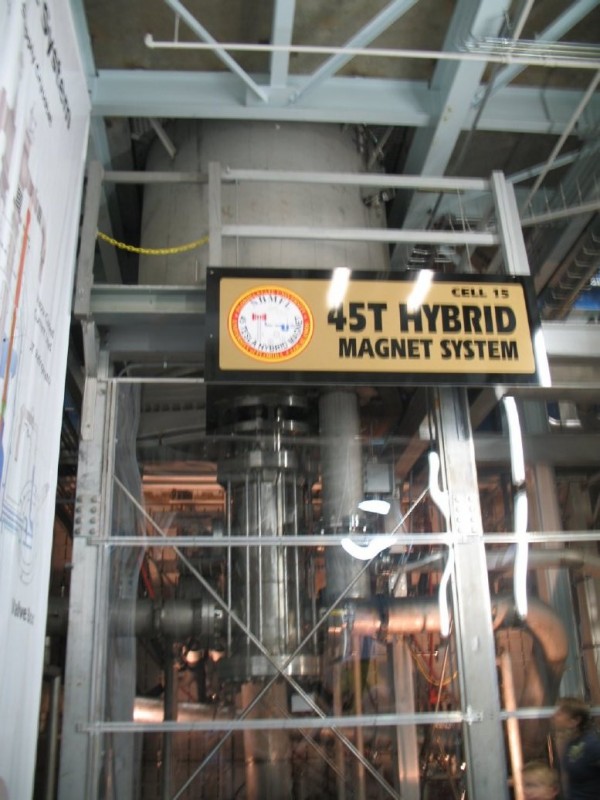
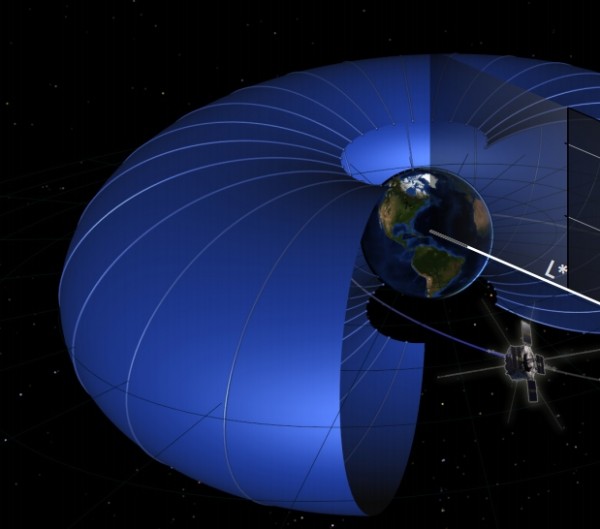
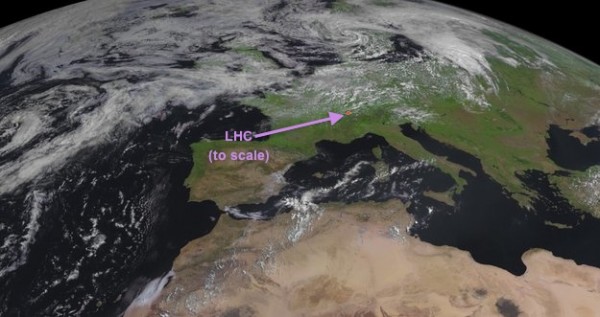
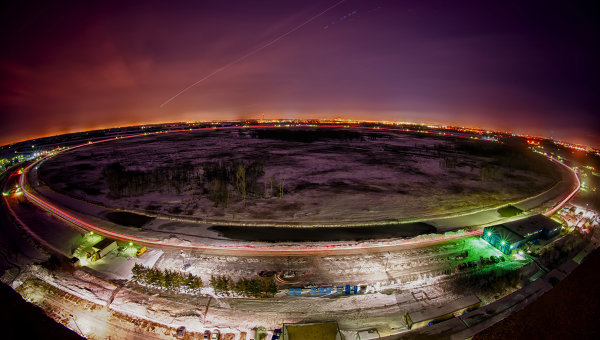
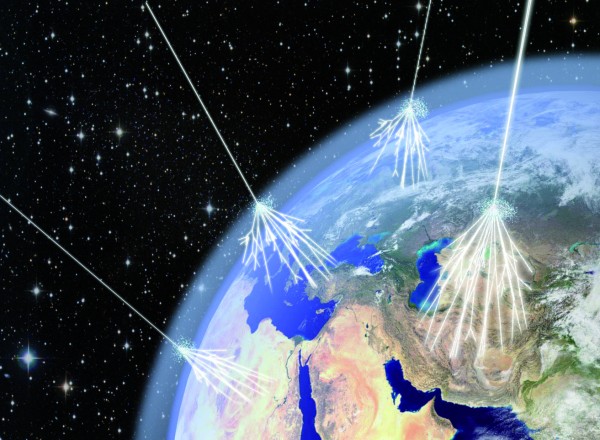
You should pitch it to Elon Musk...
Will need to work with liquid nitrogen though. Only just enough liquid helium on Earth to run the LHC as it is. (A shame party balloons are so important.)
If the radius of the LHC ring is 4.3km, then the circumference, in non-minkowski space is inevitably 27km.
Otherwise, thanks!
You are a contradiction Ethan in a previous argument you argued down a different view of a result because you were so convinced the standard model has everything right.
Now you want to spend trillions on a machine that if the standard model is right will see absolutely nothing new??????
For your evangelical groupie followers who won't understand what I am saying
http://resonaances.blogspot.com.au/
[quote=jester]
There's actually one important practical consequence. Regardless how high energy collider we build next: 30 TeV, 100 TeV, or 1000 TeV, we cannot be sure it will discover any new phenomena rather than just confirm the old theory in the new energy range.
[/quote]
LdB,
That's absolutely true. This is how we find out.
If you think all of Standard Model physics has been tested and understood, you need to start studying QCD and its predictions. There are some amazing details to learn even if it's only the Standard Model. And we'll learn all about them at higher energies, and we won't if we don't go there.
In my view, either way we win. Yes, there's quite possibly nothing beyond the Standard Model beyond our current energies. Yes, we should look anyway, learning huge amounts about how the Universe works either way.
I hope this helps clear up the apparent contradiction.
Ever applied for a grant to confirm an already known science?
You are a scientist you should know even if you confirmed the standard model at the new range it makes it no more likely that the standard model is correct than what we already think.
Spending trillions of dollars to simply confirm the standard model good luck with that ... tell you what I will accept the standard model is correct and save myself thousands of tax dollars I lose nothing in doing that.
For completeness I see Lubos has commented onJester and from the string theorists they agree a new collider will see nothing new ... thats a first these gusy agreeing ... scary
http://motls.blogspot.com.au/2013/08/some-physics-links.html
[quote=Lubos]
It has been clear to me that the Standard Model was a complete renormalizable theory – a theory that can be extrapolated to really, really high energy scales – since I was a college sophomore. (In the following year, I began to attend QFT courses: buy the book on the electroweak theory by my major undergraduate QFT instructor.) So of course that once all the necessary pieces of this Standard Model are established, there is no other new physics testable at the accelerators that is "inevitable" in an energy range that is "guaranteed".
[/quote]
LdB, ever had a cogent thought in your head?
You apply for a grant to confirm or refute a prediction of the science that is known. Every. Single. Fking. Time.
Spending trillions of dollars simply to have an undereducated idiot whine about science... shit, that's what we've got.
The title should be PARTICLE physicist's dream machine. :) Would trade accelerator for a telescope any day ;)
Australia is geologically stable (relatively) and mostly empty build it here. You should be able to fit a ~1000km radius circle on the continent.
The last time someone built particle accelerators in space, some pesky aliens and humans mistook them for galaxy-destroying weapons and fought over their control, and one a-hole space marine destroyed them. Then some fungal parasite with legs started taking control of dead bodies and they turned into zombies.
You don't want to create a violent army of fungus-zombies do you, Ethan?
No. You do not.
I don't think it's a dream, I think it's a nightmare. I'd far rather have spend the money on individual teams doing benchtop work than "big science" collaborations. I think the latter stand in the way of scientific progress. Really. There's lots of work to do yet to complete the standard model, and you don't need bigger and bigger colliders to do it. They distract people from doing it.
So what about those cosmic rays?
Here's another pipe-dream, ready to be shred apart by reality, despite being be a tad less ambitious than a high-energy ring around the moon. Why not finally give the ISS a purpose by turning it into a cosmic ray lab? I have no idea about costs and feasibility, it might require a few trillion just to extend the life of the ISS for another two decades. But imagine re-building the ISS with power plants and multiple detectors such that when it does come across that occasional very-high-energy cosmic ray way beyond what LHC can do, all the particle events could be captured and analyzed. The ISS would arguably support a pretty good sized flat area for detector arrays.
I'm sure it ain't practical, and I suspect that the results might not be scientifically useful given the relatively low event frequency; and that you don't control the energy and particle composition of cosmic rays, and thus would need to devote a lot of detector capacity on figuring out just what hit you, taking away from capacity to document what actually happened after it hit some target. Still, if it were somehow "engineer-able" and useful enough to high-energy physics, there might be a shot at re-kindling political interest and imagination on an international basis, i.e. a nice test-case for reviving "one-world" idealism.
Admittedly, I mostly don't know what I'm talking about with regard to the physics, I'm just dreaming of finally giving the ISS a real mission and purpose, something to help fire up the imagination of human-kind about the wonders and value of space exploration (beyond turning LEO into a tourist trap).
"I think the latter stand in the way of scientific progress. Really."
You're entitled to think that. Even pronounce your support.
This does not proof make.
"The last time someone built particle accelerators in space, some pesky aliens and humans mistook them for galaxy-destroying weapons"
So you admit that was no moon!
Well, first I thought 'ring world.' But engineering the structure would be too expensive.
You know, what we really need to do is just find is a set up where mother nature does it all for free, and then look for the particles we want. The set up should have an injectable stream of ionized protons. It should have a cyclotron or other mechanism for accelerating them in a circle. In a vaccuum. And some way of smashing them together. Hey, maybe like this.
@Wow
You apply for a grant to confirm or refute a prediction of the science that is known. Every. Single. Fking. Time.
Sure you do nutcase ... lets see I am going to apply for a grant to test that gravity exists you never know it might have stopped or might not be present at certain locations. Hmm what about electricity that might just stop as well better test that another good grant there.
Sorry no you don't get grants for such garbage you generally need to be either falsifying something or adding in new knowledge.
The standard model is complete across the entire range there is nothing you can add in and so you will not a grant unless you have pretty good evidence you are going to find something new or falsify something ... that's how science works.
Yes I agree Ethan's idea is pretty cool and it would be good to see it but it's never going to happen until someone finds a few cracks in the standard model to go after.
But as usual just disagreeing with Ethan is enough to get you a pile of abuse from you lunatics.
LdB
The Higgs boson search cost billions of dollars and simply confirmed the mass best predicted by theory.
In fact, it was confirming the standard model - exactly the theory you say nobody will fund experiments to merely confirm.
Here's a perspective for those worried about spending:
Our US military budget is approximately 2+ billion dollars a day. The world’s total current military budget is about 2 trillion dollars per year. Our military even has a much larger space budget than NASA. The spending priorities on this planet are inhuman, wasteful and depressing.
In any decent future we will look back at these times as incredibly foolish.
@LdB: take a look at two-photon physics on Wikipedia, which says this: “A photon can, within the bounds of the uncertainty principle, fluctuate into a charged fermion-antifermion pair, to either of which the other photon can couple”. That’s saying pair production occurs because pair production occurs, spontaneously, like worms from mud. And that a photon spends its time constantly morphing into an electron and a positron, which then magically morph back into a SINGLE photon, which nevertheless manages to keep on going at c. It just isn’t true. Photons do couple to each other. A photon can even couple to itself, as a standing wave. In a closed path. Only then we don't call it a photon any more.
Trust me, there's lots more work to be done on the standard model. And lots to be discovered. But big colliders and big collaborations don't help. All they do is fascinate, then leave people running around like headless chickens.
@eric
August 15, 2013
The Higgs boson search cost billions of dollars and simply confirmed the mass best predicted by theory
At the time the Higgs was speculated it had no 5 sigma proof, hell thousands of scientists had there own views..... that's what the LHC did it installed the standard model as the gold standard so to speak... get it.
So there is nothing left to test anymore unless you expect it to break it would be like me getting a grant to fly all around the world to test gravity still exists. Hey I am willing to do it if some university wants to fund it but we don't do it because it's a given.
When you write a grant application you write what you seek to add to knowledge or what you seek to show wrong with a current theory. You also show the basis of why you expect either for or against to be true.
The standard model is a victim of it's own success it's hard to see how a large collider will be argued for unless some new physics opens up or some new theory opens up that's says we might see something.
LdB: In other words it was built to confirm or refute a prediction of known science. And about the potential for adding to our knowledge, here's your answer:
"If you think all of Standard Model physics has been tested and understood, you need to start studying QCD and its predictions. There are some amazing details to learn even if it’s only the Standard Model. And we’ll learn all about them at higher energies, and we won’t if we don’t go there."
Weird how you were answered before you asked. It's almost like some kind of time travel or reverse causality. Or someone who doesn't read or understand. Hmm... What does Occam's Razor say...
FYI, some standard model (or mild extensions to it) predictions that could be borne out (or refuted) only by going to very high energies:
-glueballs, or bound states of gluons with no valence quarks,
-toponium, or other bounds states of the top quark that cannot exist at lower energies,
-precision tests of lattice QCD for bound state (meson and baryon) masses for undiscovered hadrons,
-high-energy quark-gluon plasma physics,
-and TeV-scale baryogenesis,
to name a few.
I guess LdB would have refused Columbus' expedition on the basis that we ALREADY knew the earth was round at that time...
LdB:
And thousands of scientists have their own views about what we may find at higher energies. Some of those views are consistent with the standard model, some are views based on other models. High energy reactions make a great testing ground for comparing different hypotheses because its an area where an hypothesis must make a prediction rather than a postdiction. Even if you think that theory A (standard model) is not worth testing at high energies because it merely predicts a null result, surely you understand the value of a test bed that can distinguish betwen theories A, B, C, and D when current tests cannot, yes? So A predicts a null result. Well, as long as B, C, and D don't predict null results at high energy, the experiment is fruitful.AIUI, many other hypotheses (such as various string theory hypotheses and supersymmetry) predict high energy particles. So reaching out to those energies allows us to distinguish between different hypotheses.
Secondly, with the caveat of limited resources, we never really stop testing any theories at the boundaries. People still test for QM entanglement. Can it work over a meter? Yes. How about over 100 meters? Yes. How about over 10km? Theoretically, yes, because distance makes no difference - but let's test it to make sure. The standard model and high energy particles is really not much different from this. Does it work at MeV? Yes. GeV? Yes. How about TeV? Maybe - let's test it. Yes, we have a prediction of what we will see. No, we are not going to assume that prediction is correct if we have the ability and resources to test it. Very likely, like QM entanglement experiments, merely figuring out how to engineer such a test will give us new and interesting knowledge.
I would think there is experimental potential to examine gravity. I mean, we know what it does but we don't know how it does it, right? If someone could devise an experiment to test that I think they might be able to get a grant.
So now the challenge is to merge what people think MIGHT happen at higher energies into a new alternative theory to the standard model. When you have a theory that makes a prediction that is different to the standard model there would be a reason to build a new collider in exactly the same way as the LHC got it's funding. The problem we now face is the standard model is installed it says nothing will show up and there aren't any real alternative theories left which would mean no new collider.
@Ethan
August 15, 2013
FYI, some standard model (or mild extensions to it) predictions that could be borne out (or refuted) only by going to very high energies:
Okay so write a blog and explain to us why and what we may expect at higher energies and how these mild extensions fit in with the standard model as you yourself argued the standard model is very hard to break. That would indeed be very interesting blog.
@eric
August 16, 2013
People still test for QM entanglement. Can it work over a meter? Yes. How about over 100 meters? Yes. How about over 10km?
The reason being there is no theory that says what the maximum distance is for entanglement ... one of the few insights I have seen
http://phys.org/news/2010-11-heisenberg-uncertainty-principle-limits-ei…
Perhaps I missed a paper anyone want to contribute and tell me a valid installed theory that says there is a maximum limit on entanglement?
However as far as I know as we said above we don't have an installed theory covering entanglement distance so it would be obvious to keep testing it ,... but hey I could be wrong let me know.
Yes, you seemed to have missed the point of my example. You're arguing against performing higher energy collisions because you think theory says we won't see anything different. Well, your argument would also apply to longer distance entanglement - theory says we won't see anything different. But physicists DO test entanglement at greater distances. The field finds value in those tests. IOW, physicists are right now doing the sorts of testing that you claim physicists don't do and shouldn't do because they are unjustified.
Then there's the fact that just because something is predicted by the Standard Model doesn't mean that every aspect of that thing is known in advance. There are plenty of free parameters. For example the Standard Model does not predict the masses of any of the fundamental particles. Instead that has to be determined empirically and then plugged into the model. And that value makes a big difference in how these particles behave.
So even though the resulting behaviors have always so far been consistent with the Standard Model, we don't actually know what that behavior is until we conduct the experiments to figure out what values to put in the model.
This is what Ethan was saying earlier -- EVEN IF there's nothing but the Standard Model in particle physics, there is STILL a ton we have to learn about that model to actually understand the behavior of the universe, and we can only learn about that by exploring higher energies.
@eric
August 16, 2013
You’re arguing against performing higher energy collisions because you think theory says we won’t see anything different.
I am not arguing anything, I have learnt that arguing anything on this blog gets you insulted and abused.
I am repeating recent discussion at the HEP conference the same discussion Jester, Peter Woit, Michael Peskin were all discussing and I am going to use the quote as it was discussed
"In the past new machines could be justified since we could point to new phenomena that pretty much had to turn up in the energy range being opened up by the machine (Ws and Zs at the SPS, the top at the Tevatron, the Higgs at the LHC). Now though, there’s nothing definite to point to as likely to show up at the energy scale of a plausible next machine."
Ethan obviously via the article and his comments has a different view and I was curious about the contradiction at first he explain that. So now I am curious about what things he thinks are likely to open up at higher energy and asked him to write a blog on it.
My answer to you about entanglement stands, we don't test and retest gravity because the current theory of gravity GR says it wont stop or not be in places so we accept it. We have no theory that covers entanglement distance so we test it. Maybe I am wrong one can never be right on here.
@CB
August 16, 2013
I understand Ethan's argument and hence I have asked him to expand it into a blog it would be very interesting.
No, LdB, "we shouldn't do science if the expected result is to confirm existing theory", is YOUR argument. Don't foist that logic onto eric. He's the one showing that your attempt to claim that this is how the science funding process really works is trivially false.
What you've learned is that if you spout nonsense you get called on it. For some reason you've decided that if you just *say* you aren't claiming anything, even though you clearly are, then that won't happen. Sorry but, no.
For instance you're claiming we don't test and retest gravity. Wrong, we do. Not "does gravity still exist", but the specific predictions of our GR are constantly being compared to observation. I'm not talking about things that haven't been seen directly yet, like gravity waves, but predictions like time dilation and gravitational lensing that have been observed for half a century.
I'm sorry that it's very difficult to be right when all you're going on is your imagination of how things might be, but the solution is to stop doing that.
It's sad that discovering the secrets of the universe and harnessing the powers of the gods for our own well being has always taken a back seat to killing each other, and sadder still that we're killing each other over resources we wouldn't need had we invested in science.
@CB
Can you even read English?
It's pretty basic there are actually two arguments ... the original "no new collider one" and "entanglement distance"
Now I will do this slowly because you obviously need help with English .. so here we go
Eric says:
Yes, you seemed to have missed the point of my example. You’re arguing against performing higher energy collisions because you think theory says we won’t see anything different
LdB says: I am not arguing anything, I have learnt that arguing anything on this blog gets you insulted and abused.
I am repeating recent discussion at the HEP conference the same discussion Jester, Peter Woit, Michael Peskin were all discussing and I am going to use the quote as it was discussed etc..
Got it the "no new collider argument" was a position of others including Jester I made that clear from post 1 because I didn't feel like arguing with the lunatics on here.
I was asking Ethan his position versus that and his apparent conflict with his previous post over standard model.
LdB: My answer to you about entanglement stands, we don’t test and retest gravity because the current theory of gravity GR says it wont stop or not be in places so we accept it.
So it is clear could not be more clear I am talking about the disagreement between eric over the second argument even put a prelude to sentence to make that clear.
Now somehow you turn that into
CB:
What you’ve learned is that if you spout nonsense you get called on it. For some reason you’ve decided that if you just *say* you aren’t claiming anything, even though you clearly are, then that won’t happen. Sorry but, no.
Oh lets see suddenly now I am backing away from my argument ... huh I thought I just said the opposite????????
CB says:
I’m sorry that it’s very difficult to be right when all you’re going on is your imagination of how things might be, but the solution is to stop doing that.
Well your ability to read is truly something imaginary but I can't help but hope you start.
For all Ethan's good work discussing anything on this blog commentary is beyond pointless so I will ignore you people and please ignore my posts to Ethan. I would be happy to just discuss particular questions to Ethan and I will label posts accordingly in future.
Love your blog Ethan. Got to visit the CMS experiment in CERN last Tuesday. Pretty awesome! CERN has two Open Days at the end of September when they expect 100,000 visitors. Keep up the good work!
MandoZink said "The world’s total current military budget is about 2 trillion dollars per year."
Reading the personal abuse on this blog between intelligent people it's no surprise that military spending on this planet is so high. Want to change this? Start by remembering that everyone here is on the same team and treating each other accordingly.
Very nice summary of the physics possibilities and very good dream machine.
Now what is impractical or too expensive to build today may be affordable in 10 or 100 years.
First values change. I mean in 1890 a van Gogh painting wasn't worth much but today it may be worth $100 million. that is because we value it; we are willing to spend money to buy such a painting.
The tourism industry is even today growing faster than the world economy. I think it was in 1995 (I can't find the data) that the world tourism industry for the first time became larger than the world military spending. (yes I'll get to physics)
World military spending (nominal)
2012 $71,800 Billion 25% of US government ewxpenditures
2000 $41,016
1900 $1,102 80% of US Fed gov expenditures during WWII otherwise 35%
1800 $175 was about 50% of US and British government expenditures
1A.D. $18. 5 B
400BC $16.2 B
10,000 BC $.37 B
So other parts of the economy, like tourism, manufacturing, information science grow faster than military expenditures.
Today world military spending is $1.8 trillion/ yr 2.2 % of World GDP
Trael & Torusim Industry is $6.3 Trillion 9.1% of WGDP
So what about science research expenditures.
UK currently spends .6% of GDP on Research and Development and their was a petition by 50 scientists to boost spending to .8% of GDP.
India currently spends .25% of GDP of R & D and wants to boost it to 2%
Another source current at 1.8% of GDP (how you define it)
UK R&D 1.8 % of GDP versus 2.5 % of GDP on military expenditures
US R& D 2.7% of GDP versus 4.4 % of GDP on military
China 1.97% on R&D versus 2.0 % on Military
Japan 3.67% on R&D versus 1.0% on military
Germany 2.3% on R& D versus 1.4% on Military
South Korea 3.74% on R&D versus 2.7% on Military
Russia 1.0% on R&D versus 4.4% on Military
So look at this!
R&D in develop countries is R&D expenditures have past or are passing Military expenditures as a percentage of GDP.
We scientists and science minded people have reason to applaud this trend.
And a trend like the growth of the Travel & Tourism industry or Reaearch & Develpment expenditures reflects the collective value(s) of all of us.
Science is a growth industry!!
Let me repeat, SCIENCE IS A GROWTH INDUSTRY that is as growing faster than the Military.
Is R&D growing faster than the Travel & Tourism industry?
I think so, though I can't find the data.
But in my mind, the three growth industries are
- Art (evidence e.g. $100M van Gogh, NYC theater)
- Travel & Tourism ( e.g. Miami Beach, cruise ships with science lectures)
- Science (e.g. R&D expenditures, this blog)
So what we value grows as an enterprise and the science enterprise is growing exponentially.
So the trend is clear.
Human values are speaking loudly. over the centuries and the decades.
- World domestic product is growing exponentially
- Military spending as % of WDP and government budget is shrinking
- tourism spending is growing faster than economy and faster than military spending
- R&D spending is growing faster than Military spending.
- Military spending is growing slower than WGDP over the decades and century (yes it spikes during world wars)
We scientist really can't whine about the state of science R&D spending.
So yes, Ethan; be optimistic: I think we will see this dream machine or even better (the collective scientific imagination is mind boggling) in the not too distant future (maybe 50 years); because MONEY follows VALUES. VALUES create MONEY (i.e. economic value). And human beings have always valued art (e.g. cave painting & dance), science (e.g. fire & stonehenge) & travel (e.g. from out of Africa to the most invasive species on the planet).
Dream on, scientists and science minded, dream on.
Ldb,
I understand your (or is it the physicists you quoted?) point. It does seem unlikely that a large amount of time and money would be expended to build a machine that is expected to yield zero results. However, that's not the case with the high energy particle accelerator that's being discussed here.
Currently, we have two overarching theories in physics, namely the standard model and general relativity. Both of these are tremendous theories; so far as I know neither has ever made an incorrect prediction. No observation has ever been made that is contradictory to either of them. The problem is that these two theories are incompatible with each other. That means neither one is complete. IOW, there must be some condition in which one or the other (or both) breaks down and we find some new physics.
To see this, consider Newtonian physics. It had a similar track record for hundreds of years. It was (and still is, provided you don't go near its limits) a perfectly good theory. However, we've now shown that it breaks down when considering very small particles, high veloicities, and at high gravitational fields. In similar fashion, perhaps SM will break down at higher energies.
Finally, it seems that you think that we are not testing gravity. That is certainly false. Obviously, we are constantly testing things like gravitational time dilation (which obviously is found in accord with GR, otherwise our GPS devices would fail). We also are testing the limits of GR, such as testing gravity on small spatial scales. The reason it may seem like gravity is not being tested is that it's much more difficult to test gravity. Gravity is very weak compared to the other forces, so it's tough to test. AFAIK, we have so far only tested gravity down to millimeter scales. There may be much more interesting physics at smaller scales, but devising experiments to find this phyics is much more difficult than figuring out how to generate higher energy proton-proton collisions.
You don't mention the energy requirements to run these huge colliders in space/around the earth or moon. But if you have the technology to build them, transferring the energy probably isn't as hard (laser-beaming, focussed solar energy over a large area, fusion - if we've done it efficiently enough by then, whatever).
Dear Mr Sigel,
Can we justify the means of building such an expensive machine with the benefit it would ad to our understanding of science and what discoveries would your theoretical accelerator lead up to?
Love / DB
www.drboblog.com
Cold Fusion Energy News Portal and Log